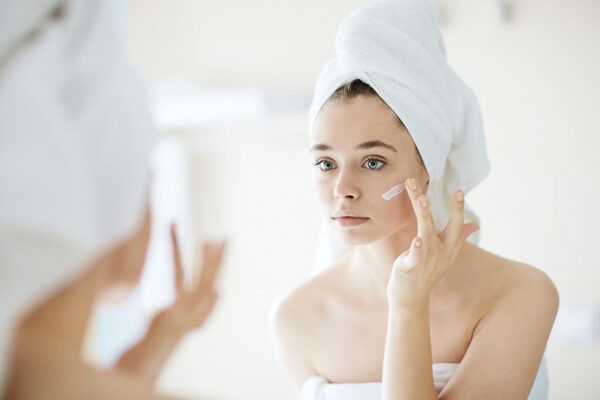Sensitive Skin? Here Is Everything You Need to Know
The term “sensitive skin” refers to unpleasant sensory responses instigated upon the skin’s exposure to substances that are not supposed to trigger such reactions. The manifestations include a vast variety of symptoms, starting from redness and itching, through sensations of stinging or burning, tingling, discomfort, pain, dryness, scaling and pimples, and ending with skin diseases such as psoriasis, seborrhea, rosacea and atopic dermatitis. According to a study published in May 2019 in the journal Frontiers in Medicine, the prevalence of this phenomenon is extremely high: 60–70% of women and 50–60% of men report having some degree of sensitive skin. The subjective sensory response to the stimulus is not always accompanied by other visible objective signs. In order to correctly diagnose and treat sensitive skin, it is important to understand the characteristics of this skin type and the reasons for the sensitivity.

Sensitive Skin Versus Allergic Skin
Many people who suffer from skin sensitivity may think they are allergic. However, there are significant differences between the two problems. Allergy is the immune system’s overreaction to a certain stimulus. In cutaneous allergies, an immune response is triggered as the skin comes into contact with the particles of the allergen (the cause of the allergy), and leads to the appearance of inflammation upon the skin. This response is a delayed response—namely, a certain time span, ranging between a few hours to two days, passes from the moment of contact with the allergen until the detection of the allergic response in the place of contact. In most cases, the process is initially latent, and the inflammation appears only upon the reoccurring exposure to the substance. Conversely, skin sensitivity is the outcome of a variety of causes, which include genetic and environmental causes. The sensitivity may be congenital, or, alternatively, may develop gradually throughout life or appear suddenly. Among some of the people who suffer from the problem, the neurons found under the skin surface are more sensitive. Among many others, the sensitivity stems from damage to the skin’s protective barrier, instigated by the exposure to various environmental causes such as the sun’s radiation and air pollution, or by chemicals, drugs and different detergents. Several studies have found that, among people with sensitive skin, the number of ceramides in the stratum corneum is significantly lower in comparison to people who do not report about skin sensitivity. These lipid molecules, found in high concentrations in the membranes that surround the cells, constitute one of the fatty components of the intercellular cement, which binds the skin cells in the stratum corneum and creates the skin barrier. Therefore, the decrease in the number of ceramides leads to damage to the skin barrier, and as a result, to the skin’s increased sensitivity. It is important to note that skin sensitivity is not necessarily a permanent condition. A considerable number of people with sensitive skin report about increased sensitivity during periods of stress and tension, in the transitional seasons or on days with extreme weather.
Products for Sensitive Skin: A Meticulous Development Process and Stringent Tests
In light of the high prevalence of the condition, some of the cosmetic companies choose to develop designated products that help cope with the condition, prevent irritation and assist in soothing and rehabilitating the skin. These products operate for a natural rehabilitation of the skin by stimulating the natural repair process of damaged cells and by accelerating the cell regeneration. In addition, they aid in the reduction of pain, redness, inflammation and swelling of the skin.
The R&D process of products designated for sensitive skin is extremely meticulous. Each of the components used in these products is carefully selected in order to address the skin’s needs of soothing and rehabilitation. Moreover, since the damage to the skin barrier is one of the main causes for the problems, the designated products contain neutral acidity (PH=5.5), so as not tocompromise the balance of the skin’s protective layer. In addition, in order to establish the claim that the products are designated for sensitive skin, these products undergo a very rigorous process of approval with the Ministry of Health, in accordance with its stringent regulations (as well as the regulations of the other health authorities). According to these regulations, the products are bound by rigorous clinical tests, in order to test the development of skin irritations caused by their use. The manufacturing company is permitted to print the statement “For Sensitive Skin” on the packaging only after a designated product successfully passes these tests. In the “sensitive skin” test, at least 10 out of the minimum number of 50 participants in the clinical trial have to be people defined in advance as people who have sensitive skin. As such, this test is considered to be even more stringent than the hypoallergic test, performed on a group of participants without initially testing if they suffer from allergies. These clinical tests take place in research institutions, and are executed by dermatologists, who must receive the Ministry of Health’s authorization to conduct them. In the test, a small amount of the tested product or raw material (0.07 to 0.1 ml. or grams) is applied onto the upper surface of the subject’s arm, or alternatively, onto the subject’s back, between the shoulders. A surgical pad is placed on top, and the area is bandaged with a sealing bandage for 48 hours. After 48 hours, the cutaneous response is assessed. The reading of the results is rated from 0 to 4, starting from the absence of a response, through redness, redness accompanied by stiffening, and ending with the development of blisters and vesicles. Only a product that successfully passes the clinical test receives the Ministry of Health’s approval to note that it is destined for sensitive skin, with the sensitivity test being recorded in the product’s license certificate. Such product will receive a dedicated cosmetic license, as opposed to a general cosmetics license.